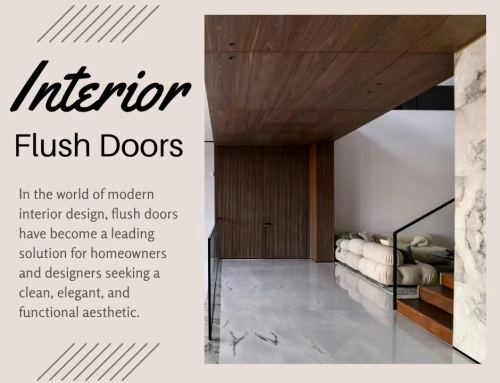The best building materials speak a language in and of themselves, telling a story that resonates with architectural sensibilities more effectively than any human-composed narrative ever could. With this in mind, keep reading as we explore some of the most innovative ways that building materials shape the architectural language of a building.
6 Reasons Building Materials Define the Architecture

Establish Visual Identity with Building Materials
It’s an age-old maxim that doesn’t necessarily hold water in contemporary architecture.
The aesthetics, first impressions, and curb appeal of a building are integral to defining the structure. Drab, cookie-cutter edifices do not make the grade. The structure must stand out. It must inspire wonder. It must capture public attention, and the building materials used make a big impact.
There are numerous ways to accomplish this. Glass is a popular choice when it comes to building materials; it livens up the space, enhancing light flow and creating a welcoming ambiance. The use of architectural louvres to promote ventilation also helps establish visual intrigue through their sleek design lines. Decorative screen panels around the building’s perimeter can define space and add geometric dimension to facades that otherwise feel a bit too mundane.
Express Functionality Using the Right Building Materials
Occupants need to feel at ease in modern structures. They need an escape from their fast-paced, tech-centric lives. Buildings that flow logically and don’t need an “owner’s manual” to access can help people get optimal use and enjoyment from the structure.
Open floor plans are a great place to start. They can work with virtually any interior design scheme, especially when paired with thoughtfully chosen building materials that enhance flow and functionality. A large kitchen island with a deep farmhouse sink ties it together. It is the perfect gathering spot for meals, entertainment, or casual work functions. Covered outdoor hangouts with durable patio flooring are another great idea. They offer a finished, comfortable aspect that will naturally draw occupants outdoors in all seasons. Sliding pocket doors are a wonderful way to maximize space. They help provide privacy and defined space as needed while seamlessly tucking away for greater connectivity when the occasion arises.
Speak to Quality
It is hard to sell a building as “high quality” when the building materials don’t look the part. Just as a world-class surgeon tells a story with their accoutrement, so too do architectural building materials reflect the quality of the building.
There are many building materials, both structural and surface-level, that can establish a first-rate impression. Insulated concrete forms (ICF) in framing and basement walls provide the ultimate in continuous insulation for an airtight building envelope. Stunning ipe hardwood decking has the deep rustic appearance of desirable decking options while offering next-level durability. Engineered quartz countertops offer a natural stone aspect with streamlined maintenance requirements when compared to marble surfaces.
Foster Inclusivity
Modern buildings must be highly inclusive. They should be welcoming and accessible to people of all backgrounds. There is more to accomplishing this than posting a sign of compliance in the lobby. The building materials themselves must convey the fact.
Look into stunning polished concrete floors treated with special non-slip coatings. They are wonderful for handling foot traffic while ensuring accessibility for people with mobility assistance needs. Get creative with commercial stair design ideas. Not only will sleek modern railings enhance the safety of staircases, but they will also optimize spatial flow and ensure aesthetic continuity with the overarching design theme. Leverage motion-detection and mobile-controlled features as much as possible to facilitate usage among all building occupants.
Demonstrate Core Values
Greenwashing is rampant in contemporary society. No matter how unethical or categorically false the claims may be, companies are quick to extoll the environmental friendliness of their offerings and operations to try and win over an increasingly conscientious market.
In the design realm, such claims should be superfluous. Let the building materials do the talking. Incorporate PV window glazing and other forms of solar technology to reduce the structure’s reliance on nonrenewable energy. Source eco friendly insulation, such as recycled denim or sheep’s wool, to boost R-value while limiting natural resource harvesting. Use upcycled and repurposed materials, such as salvaged wood shelving and recycled steel furniture, to further demonstrate a commitment to sustainability.
Boost Optimism
There is no shortage of research identifying the power of optimism and positive self-talk. It is one of the foundational components of mental health and personal well-being.
Allow your building materials to provide a head start toward this type of positive mindset. Install large, low-E windows to enhance natural light transmission without causing unnecessary warming. Use light color choices on the wall for greater light reflectivity and a brighter ambiance. Hang acoustic wall art to liven up the space visually while simultaneously stifling noise.
Giving Structures a Voice: The Architectural Language of Material Choices
The best building materials do more than serve a constructive purpose–they tell a story. From expressing aesthetic identity to providing optimism to occupants, consider any of the ideas listed above for ways that materials can shape the architectural language of a structure. For more of the latest trends in contemporary design, explore the content at Dig This Design for ideas and inspiration!





